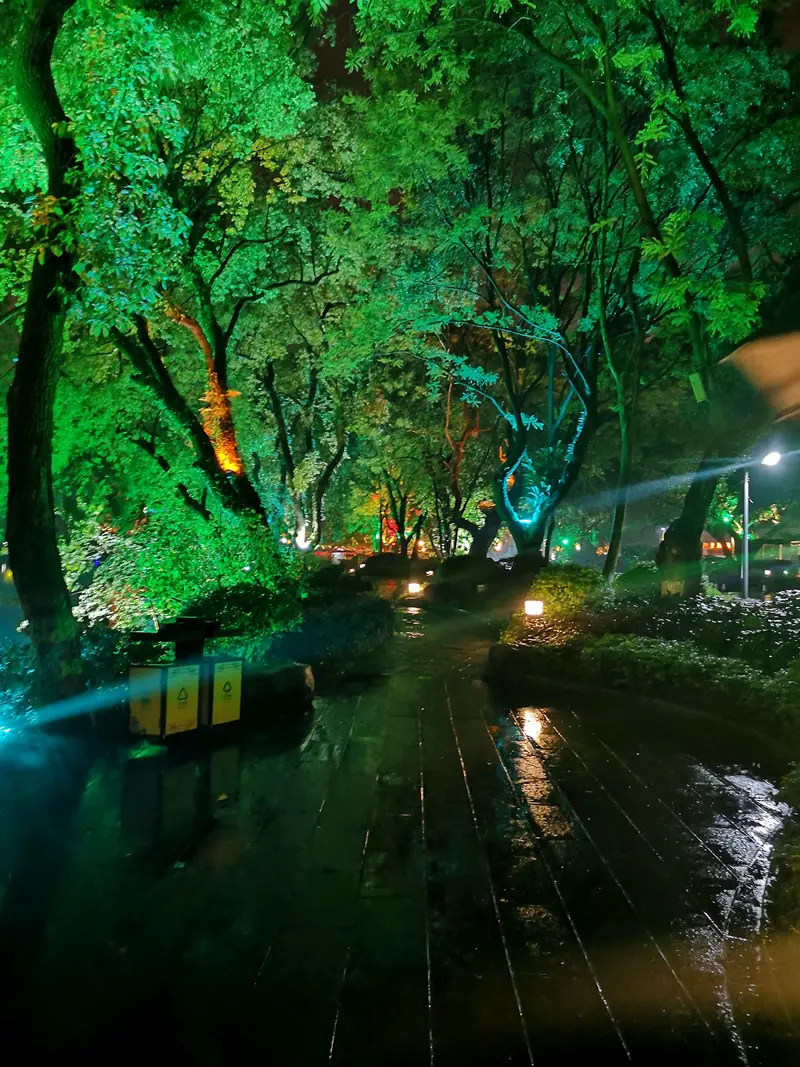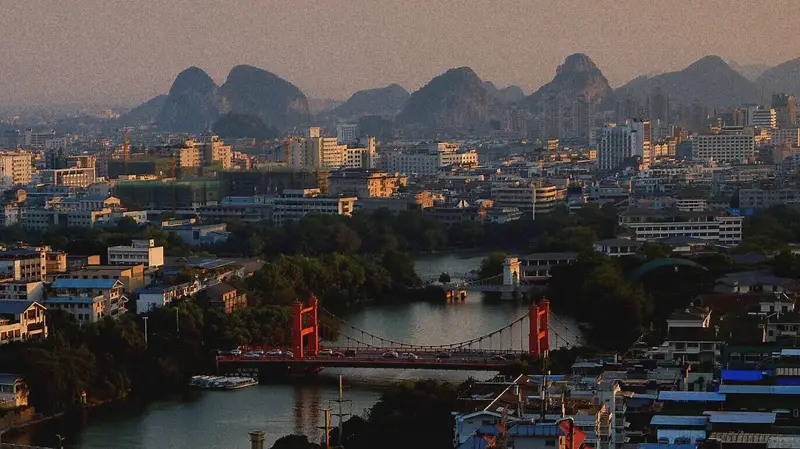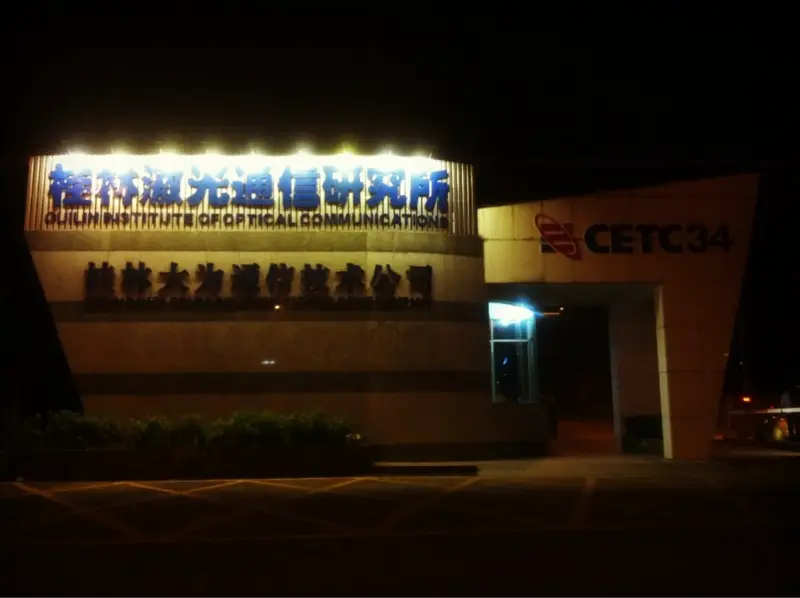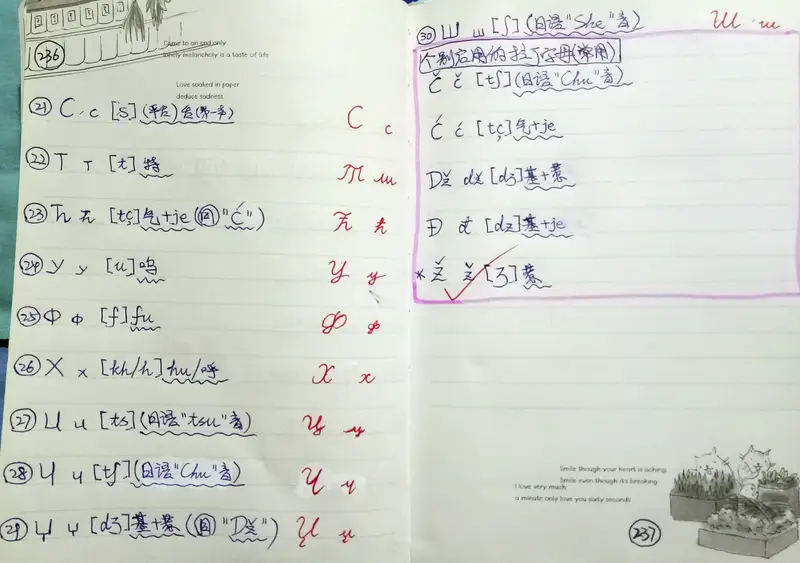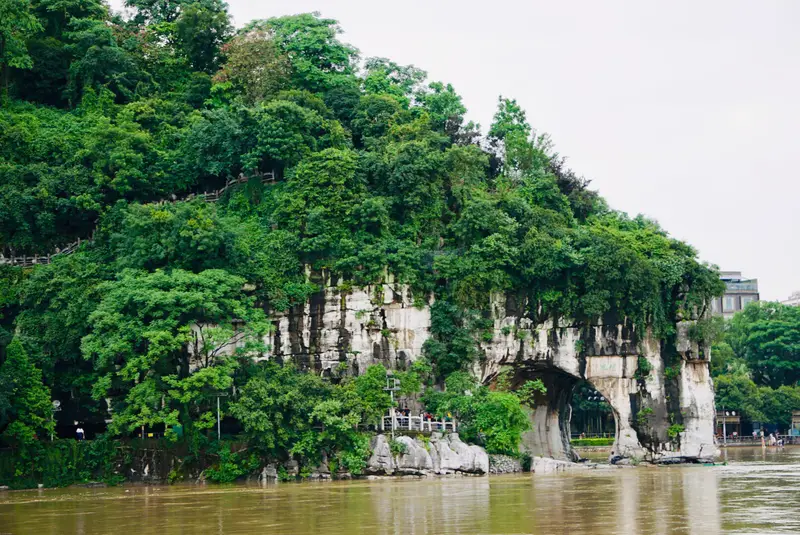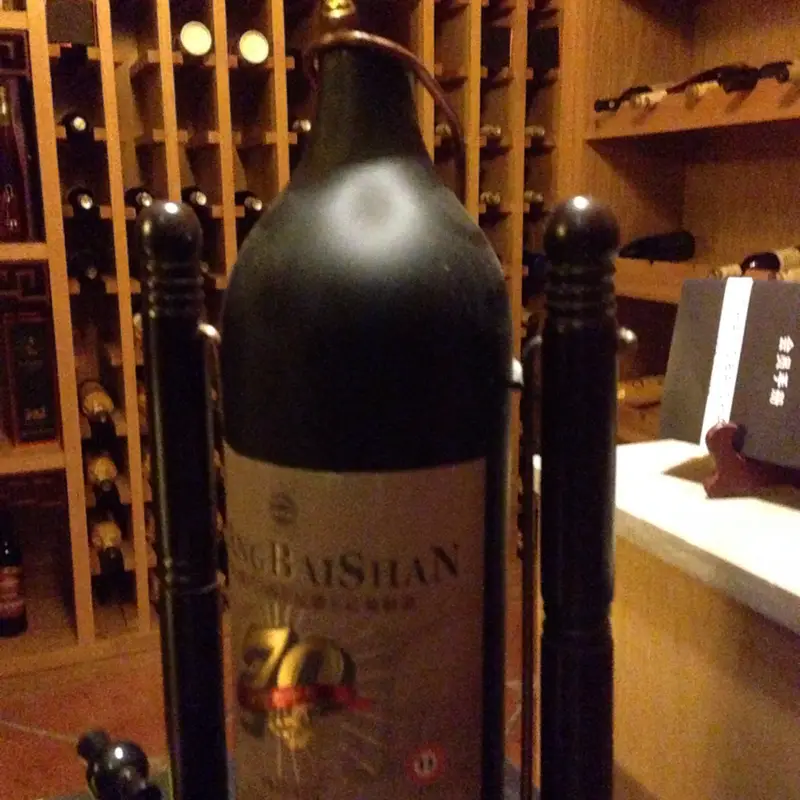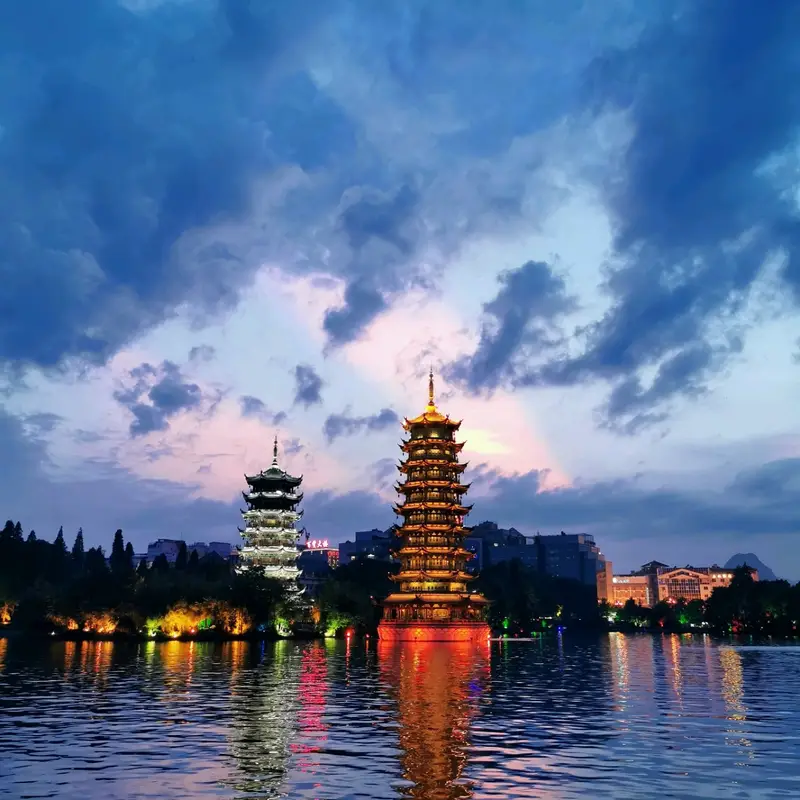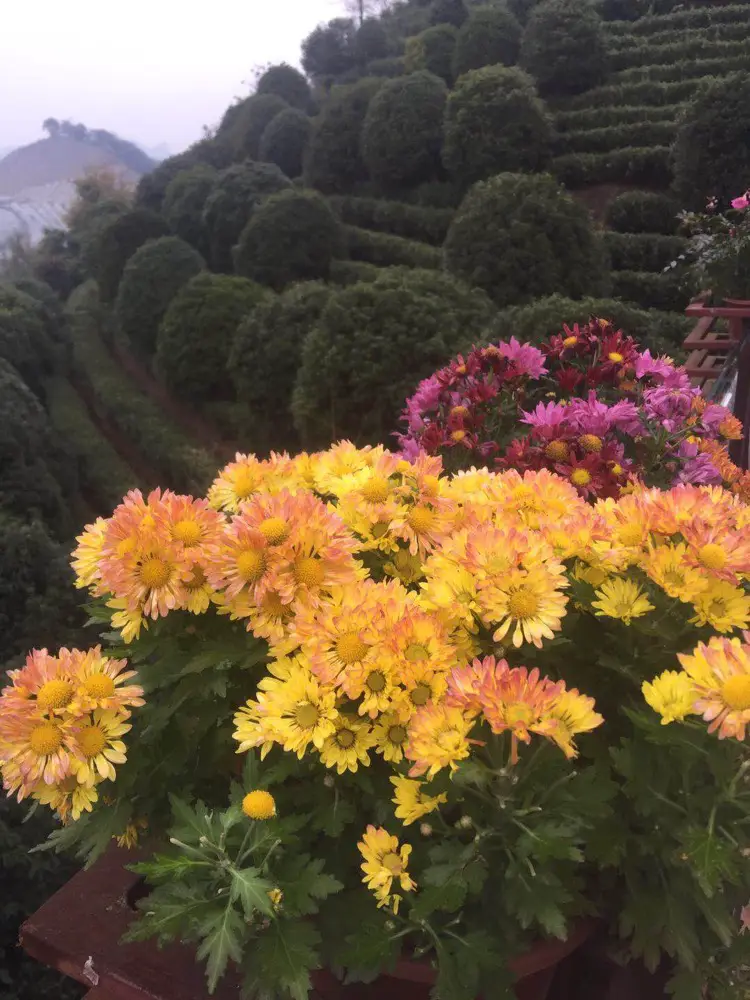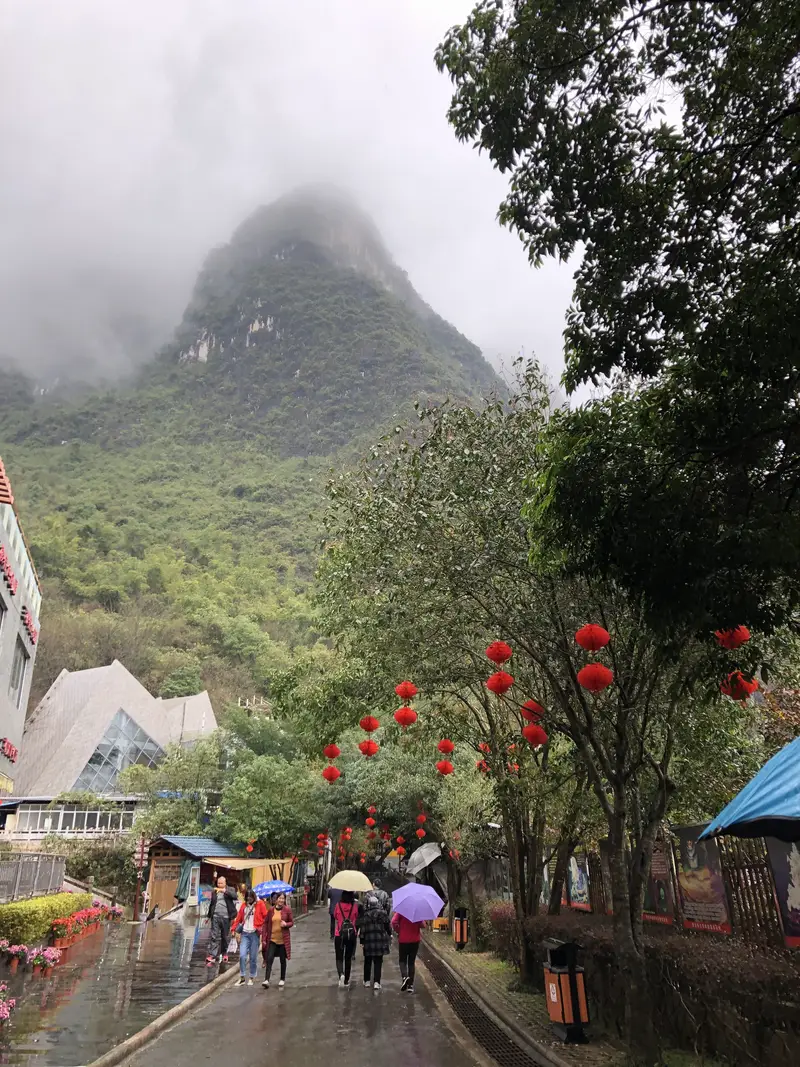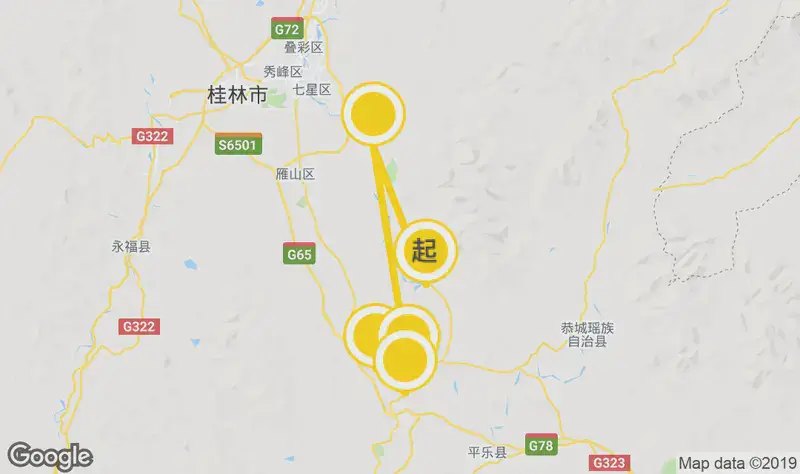Location & How to Get There
Yunfeng Temple sits nestled in the southwestern foothills of Elephant Trunk Hill, one of Guilin’s most iconic landmarks. The temple’s address is No. 2 Dongzhen Road, Xiangshan District, Guilin, Guangxi Zhuang Autonomous Region—easy to find if you’re already exploring Elephant Trunk Hill Park. It’s a short walk from the park’s entrance, making it a perfect add-on to your Elephant Trunk Hill visit. If you’re coming from central Guilin, buses 10, 11, or 30 stop nearby, and taxis will drop you right at the temple’s steps.
Natural Beauty: A Mountainside Gem
Perched against the rocky slopes of Elephant Trunk Hill, Yunfeng Temple feels like a hidden treasure. The temple blends seamlessly into its surroundings, with lush greenery framing its ancient roofs. From the temple grounds, you can gaze up at the towering limestone cliffs, which resemble the massive trunk of an elephant drinking from the Li River. The view here is especially magical during sunrise or sunset, when the sky paints the hills in shades of gold and pink. Nearby, the Li River flows gently, adding a serene soundtrack to the landscape.
Cultural Charm: History & Spirituality
Yunfeng Temple isn’t just about nature—it’s a window into Guilin’s spiritual heritage. The temple dates back centuries, though its exact origins are shrouded in local legend. Today, it’s a working Buddhist site, with monks chanting sutras and visitors lighting incense sticks. You’ll spot intricate carvings on the temple walls, depicting scenes from Buddhist tales, and a calm energy that makes you want to linger. Even if you’re not religious, the temple’s tranquil vibe is worth savoring. Locals often visit here to pray for good fortune, especially before big life events—a tradition you can dip your toes into if you wish!
Getting Around: Practical Tips
Visiting Yunfeng Temple is hassle-free. The area is compact, so no need to worry about long hikes. A stone staircase leads up to the temple, flanked by lanterns and stalls selling snacks or souvenirs. If you’re traveling with kids or older adults, the gentle slope won’t leave you panting. Once inside, the temple grounds are flat and easy to navigate. Keep an eye out for signs pointing to nearby attractions like Elephant Trunk Hill’s viewing platforms or the Li River promenade.
Facilities: Comfort Without Crowds
The temple area is surprisingly well-equipped. You’ll find clean restrooms near the entrance, along with water refill stations—a lifesaver on hot days. Snack vendors offer light bites like buns or fruit skewers, though we recommend saving your appetite for Guilin’s famous rice noodles, available at nearby restaurants. There’s also a small gift shop where you can buy Buddha statues or locally made crafts. If you forgot your hat or sunscreen, don’t worry—a few stalls sell travel essentials too.
The Experience: Why Visit Yunfeng Temple?
Stepping into Yunfeng Temple feels like escaping the modern world. Unlike crowded tourist traps, this spot offers quiet reflection. Spend a few minutes sitting on the temple’s stone benches, listening to the wind rustle through bamboo groves. Photography lovers will snap endless shots: the temple’s red-and-gold architecture pops against the gray limestone, while the Li River in the background adds a touch of drama. For a deeper dive, join a guided tour (offered in English if you ask ahead) to learn about the temple’s role in Guilin’s history.
Pro Tips for Your Visit
- Best Time: Early morning or late afternoon avoids midday crowds and harsh sunlight.
- Combine Trips: Pair Yunfeng Temple with Elephant Trunk Hill for a full day of sightseeing.
- Respect Rules: Dress modestly (cover shoulders and knees) when entering the temple.
- Hidden Spot: For a unique view, climb the steps behind the temple to a lesser-known lookout over the Li River.
Whether you’re a culture buff, nature lover, or just looking for a peaceful break, Yunfeng Temple delivers. It’s the kind of place that makes you slow down, breathe deeply, and remember why Guilin is called “the most beautiful city in China.”


